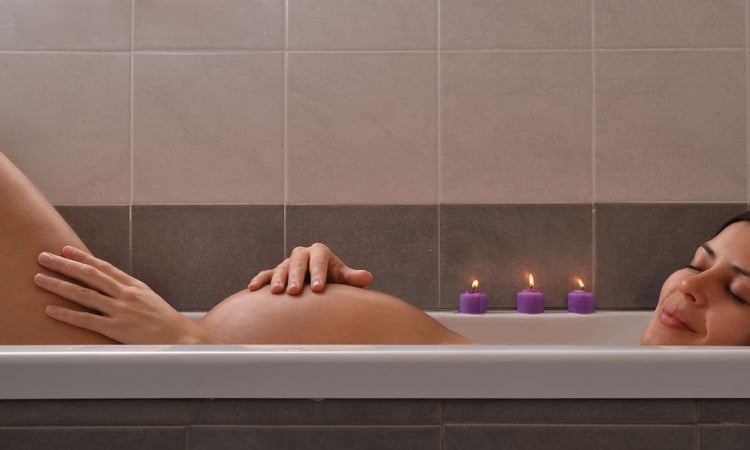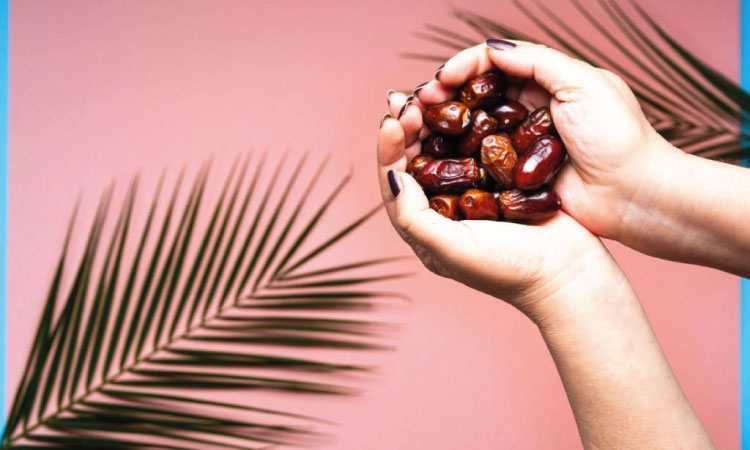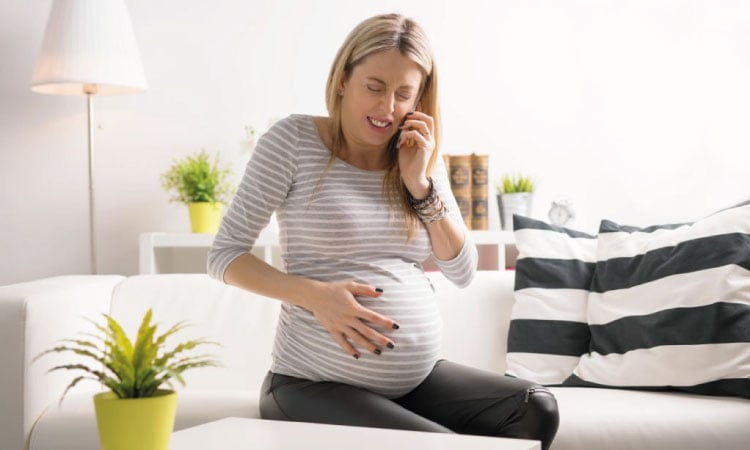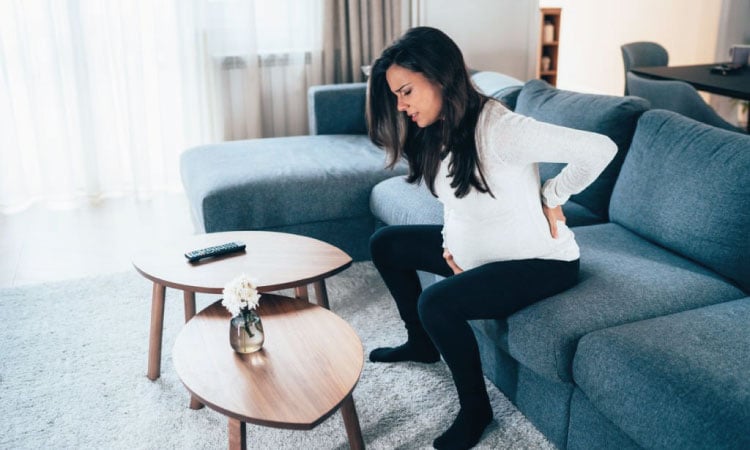Pregnancy is the turning point in a woman’s life and it comes with new challenges till the baby is born. Birthing experience is different for different women. For some, the labor must be induced or there will be a possibility of getting medicines for pain in labor, and very few even undergo a cesarean as well. All these are undertaken as they are mandatory and help in saving the life of the mother and the baby. These are lifesaving yet carry potential risks of organ damage, hemorrhage, infections, blood clots, adverse medication reactions, etc. All these can be beyond or above vaginal birth. Contractions precede the birth of the baby. Let’s learn how to relieve contraction pain at home before seeking medical care.
Medical help might be taking too long, resulting in pain that is escalating exponentially. It is highly beneficial to learn how to ease contraction pains at home under these conditions. During this stage, contractions are painful and tedious, so distracting yourself and practicing coping techniques are crucial.
11 Ways To Ease Contractions Pain At Home
Latent labor or early labor as it is called is the initial stage of labor. These start with very mild contractions that are consistent but not like the Braxton Hicks contractions. This labor is the longest part of labor, can even last for a few days. The contractions are erratic at the start and can last for 20 minutes. As this stage is time taking few means to stop contractions from hurting are important and 11 of them are given as under:
1. Don’t go to the hospital too early
It is not a good idea to rush to the hospital or the birthing center before time. This can have its implications like:
- Reaching too early does not help as the staff sends you back
- Also, there are high chances of delivering by caesarean
- It is best to call the doctor when the contractions happen within a gap of 5 minutes and last for at least 60 seconds
- Asking for instructions to be followed by the doctor while in labor
- In case the water breaks or suffers from fever, or any leakage of fluid from the vagina, it is advisable to call the doctor immediately
2. Following soothing techniques
If the pregnant woman has taken childbirth classes, she is aware of the relaxation techniques that can be followed to cope with the labor pain. All the techniques help in being relaxed and even answer “what helps with contraction pain at home”.
Some of the techniques that can be followed are1:
- Mental and physical relaxation: Doing exercises like visualization, progressive relaxation, and repetitive mantras
- Soothing environment- Whispering, dim lighting, and aromatherapy
- Hydrotherapy- Some women feel relaxed when they take a warm bath or shower
- Self-hypnosis- Some hypnobirthing techniques for relaxation
- Comforting touch: Holding hands, massaging, stroking, or brushing hair
- Deep breathing- This helps in relaxation and even offers oxygen to the fetus
- Change positions: It is best to lie on the side, lie over the exercise ball, bounce on the exercise ball, lie on your side, bouncing on the exercise ball
3. Take a walk
Walking during early labor helps to distract and has many other benefits2:
- Research indicates that women who are mobile or who stay upright during labor end up having shorter labor pain, very few chances of a cesarean. They don’t even need an epidural for managing pain
- Taking a walk can be in the neighborhood, a park, in the home, etc. Walking offers a great way to use gravity for encouraging the baby to descend
Related Reading: 11 Benefits Of Walking During Pregnancy
Calculate Due Date With LMP
4. Finish packing your bag
The pregnant woman is always advised by the doctors to keep things ready ahead of the delivery time. A bag should be ready which has to be taken to the hospital. There are certain things to know before packing a hospital bag which will make your life easy at the hospital. When having a contraction, it is best to tally the checklist and ensure all the items are there, and in case anything is missing, to include it now. A few important items to be taken are:
- Snacks, drinks, and other perishable items
- Cameras, phones, chargers, or laptops
- Toiletry items like toothpaste, toothbrush, hairbrush, deodorant, lotion, shampoo, etc
- Glasses
5. Take a warm bath

If water has not broken yet, taking a warm bath helps in soothing and distracting to ease the contractions pain when at home. There is no set time in the day for the contractions to start, for some, it can be morning while for others it can be night as well. To learn how to ease contractions at night or day, below benefits have been listed by researchers:
- Shorter labor
- Fewer chances to use an epidural, spinal or paracervical analgesia treatment
- Whenever possible, avoid sitting submerged in a bath rather than taking a warm bath. This will significantly reduce the chances of infection (if the water breaks)
6. Seek relief with warm or cool compresses
Placing a warm pack on the lower back, groin or abdomen or shoulders helps in alleviating the contractions pain. Some people even suggest filling a sock with uncooked rice and then warming it for one minute. A cold pack with ice chips also helps to offer relief from the pain, the icy back however should not be placed on the abdomen. Cool clothes can also help in relieving a sweaty chest, face, or neck3.
7. Bake
Some women find baking very helpful and relaxing. Baking some cookies is also a great way to distract the woman and help her with easing the contraction pain when at home.
8. Hydrate
Staying well hydrated throughout pregnancy is of utmost importance. Contractions lead to labor which is very painful so keeping the body hydrated is a good way to replenish the body and help to ease out the contractions pain. Fluid restrictions are restricted to pregnant women who are obese, have diabetes or have other issues. Clear fluids are also a good choice for hydration but getting a go-ahead from the doctor is a must4.Some clear fluids are:
- Fruit juice without any pulp
- Water
- Tea
- Black coffee
- Carbonated beverages if allowed by the doctor
- Sports drink on doctor’s recommendation
9. Eat light
Food always offers energy. Similarly having a light meal when contractions occur helps in bringing back the energy. The light meal can comprise of a sandwich, fresh fruits, toast, etc. The body needs the extra energy to get relief from the contractions pain5.
Related Reading: 21 Pregnancy Superfoods To Include In Your Pregnancy Diet
10. Watch a movie
To ease the contraction pain when at home, watching a movie is a great way to distract and the focus gets shifted from the pain and helps in relaxing the woman, thereby helping in easing out the pain from contractions. We recommend you these best movies to watch during pregnancy.
11. The nursing instinct
Engaging in activities that need less attention is a great way to distract and ease the pain while at home. Folding baby’s clothes to ensure all is organized, cleaning up, filling in baby’s book. Filling in the pregnancy information or jotting the journey of the baby from the time it was conceived, filling in the family tree details. In a way preparing for the coming baby by doing little things also shifts the focus from the contraction’s pain and soothes the mother-to-be.
How To Tell The Difference Between Braxton Hicks And Real Contractions?
Contractions are an indicator from the body to alarm the pregnant woman that you are getting into labor. Contractions are normal at the end of pregnancy, but not all are real. It is also possible to get a false labor alarm. Some contractions are not real and are called Braxton Hicks contractions.
What are Braxton Hicks Contractions?
They are named this after the doctor Braxton Hicks. These are more like practicing contractions that the body gets when the baby is going to arrive, but they are not the ones right before labor, hence also termed as false alarms6.
Since the contractions sound similar in both cases, let us have a brief look at the Braxton Hicks contractions and how to differ them from the real contractions as well. Some features of Braxton Hicks contractions are:
- These contractions also tend to thin the cervix like the real contractions but do not lead to delivery
- These contractions are felt in the third trimester
- The contractions occur at different times, generally in afternoons or evenings especially when the pregnant woman is too active and relaxing
- They generally become more when the due date is nearing
- Under Braxton Hicks contractions, the abdomen feels tightened but it is less painful
- Contractions keep coming and going
- They are not stronger or closer
- The contractions disappear if the bladder is empty
- The contractions even go away if the position is changed
Related Reading: 7 Home Remedies For Abdominal Pain During Pregnancy
What Are Real Labour Contractions?
Real contractions occur when the body releases the hormone oxytocin that accelerates the process of uterus contraction. This signals that the body is getting into labor. Few other features are7:
- Real contractions start at 40 weeks of pregnancy
- Real contractions that take place before 37 weeks are called premature labor
- As contractions begin, the upper part of the uterus tends to tighten to push the baby into the birthing canal
- These contractions are referred to as a wave, as the pain is mild in the beginning and then worsens more till it reaches the peak and then disappears
- If the abdomen is touched at the time of a real contraction, it is hard
- The real contractions happen five minutes apart and then start reducing to three minutes, two, and finally one
- These contractions are more intense and more painful as time passes
Some additional signs that indicate that contractions are leading to labor can be:
- Pinkish blood-like mucus when in the washroom
- The dropping of the baby lower in the belly
- Fluid leaking from the vagina or water break. (Referring to the amniotic sac or a bag of fluid breaking)
Given below is a brief chart that helps in differentiating between real labor vs. Braxton Hicks contractions8.
Questions Braxton Hicks contractions Real Contractions When do they start? They can start as early as the second trimester, but more often in the third trimester. After your 37th week of pregnancy (if they come earlier, this can be a sign of preterm labor) How often do they come? From time to time, no regular pattern and they do not become strong At regular intervals, and get closer and together in time, stronger with time. How long do they last? From less than 30 seconds to a few minutes From 30 to 70 seconds How do they feel? Feels like a tightening or squeezing, uncomfortable but not usually painful Like a tightening or cramping that comes in waves, starts in the back, and moves to the front, getting more intense and painful over time.
How Can I Use Herbs To Make Contractions Hurt Less?

There are many ways to cope with contractions. Let us see “What helps with contraction pain at home”. Herbs are a good way to ease off the pain during contractions as well. It is a good and even safe way how to ease contraction pain at home. Science says red dates and red raspberry leaf helps with contractions. Here we will discuss the herbs for labor pain relief, how they should be consumed, and other aspects of it.
Red raspberry leaf
The red raspberry leaf has been used for centuries in North America and Europe and is famous as a mineral-rich tea that helps women in preparing for birth. Some other benefits for having a tea with red raspberry leaf are9:
- This leaf is high in vitamins like A, B, C, and E
- It has minerals like calcium, potassium, phosphorus, magnesium which are good for nourishing the uterus but even offer minerals for contracting and relaxing
- It is also rich in fragrance which helps in stimulating the uterine muscles.
- It also helps to decrease the chances of preterm labor
- Lowers the possibility of having a C-section, forceps delivery, or vacuum extraction
- This herb is a gentle, effective, and nutritional herb that can be used in third and second trimesters
- It is advisable to consult a doctor on the dosage. Studies however indicate having one to two cups regularly in the last leg of pregnancy help in easing off the labor pain
Red dates
Date fruits are one of the most ancient sweets. These are loaded with proteins, fats, vitamins, minerals, fibers, and carbohydrates. It is common to prepare for labor with these nutrient-rich foods. They are also helpful in easing contraction pain as well. Some benefits of having dates are10:
- It increases the ripening of the cervix
- Lesser need for inducing labor
- More chances of dilation when reaching the hospital
Related Reading: 12 Signs Of Healthy Baby In Womb- Trimester Wise
Risks and Dosage of Dates
Since dates are high in sugar, they might not be recommended for ladies with gestational diabetes, so always advisable to consult a doctor before going ahead. Even for dosage, it is generally recommended to take 70-80 grams of red dates starting at 36 or 37 weeks of pregnancy till labor begins but since all women have different symptoms, it is better to consult a doctor11.
Research indicates that a woman who ate six dates daily for four weeks till the due date was more dilated when they reached the hospital and went into spontaneous labor. Another study shows that women who were having dates from 37 weeks had higher success rates of labor and more cervical dilation. It even indicates that eating dates even led to less bleeding post-delivery.
Conclusion

Thus, it is important to keep in mind that contractions are a part of getting into labor. The process is safe for your body and the body is perfectly designed to carry the same. Contractions indicate that the time to have your baby is coming closer. So, the process should be smooth for the mother to enjoy all aspects of it. Contractions are natural and cannot be avoided but techniques to ease the pain can be followed so that it is not difficult in the end. The end is very fulfilling as the baby finally arrives.
FAQs
Contractions of the uterine muscles cause pain during labor. This is because the pressure is exerted on the cervix by these muscles.
This pain is felt as strong cramping in the back, groin abdomen, and back with an achy feeling.
A deep breath increases the baby’s oxygen intake and relaxes the body, which lessens the pain caused by contractions.
Another way to control the pain during early labor is by sitting in warm water. Warm water tends to soothe the muscles and help in relaxing.
Relaxation is very important currently, so it is always advisable to get a doctor’s recommendation before going ahead with it.

